Antarctic Penguins
Penguins are the archetypal Antarctic animals, but only two species, Emperor and Adélie, are truly Antarctic and found nowhere else. The other Antarctic penguins, such as Chinstrap and Gentoo, also occur on sub-Antarctic islands. Elsewhere in the world there are species of penguins which live in warmer climates and one, the Galapagos Penguin, lives practically on the equator. However, they always live where very cold waters feed up from the south. They are flightless birds, well-adapted for life in the sea where they spend most of their time.
Emperor Penguins are the largest, standing over a metre in height and weighing 22-45 kg. Captain Scott, on his 1901-04 Discovery Expedition, was the first to observe the migration of the Emperor Penguin.
They come ashore in April and then walk up to 100-160 km inland to their breeding areas. After laying her single egg, the female returns to the sea to feed, leaving the male to incubate the egg through the severe Antarctic winter.
For nine weeks he endures temperatures as low as -50°C and winds of up to 200 km/h. During this time he cannot feed and by the time the female returns in spring he has lost 45% of his body weight!
The early Antarctic explorers collected penguins for food but some were also collected as scientific specimens. We have several in the collections here at Amgueddfa Cymru.
Antarctic Penguins
Gentoo Penguin, Waterboat Point, Antarctic Peninsula. Image: T Sharpe
The Gentoo Penguin is another of the small penguins and is the least common of the Antarctic penguins with a world population of about 300,000 pairs. Most of these are found on sub-Antarctic islands such as South Sandwich, South Shetland, South Orkney, Crozet and Heard. However, unlike the Adélie they aren't dependent on the pack-ice and it looks as though their numbers are increasing on the Antarctic Peninsula as it warms up.
Chinstrap penguin in the Museum's collections
Chinstrap Penguin, Half Moon Island, Antarctic Peninsula. Image: T Sharpe
The Chinstrap Penguin is roughly the same size as the Adélie and is easily recognised by the thin strip or strap running under its chin. They are the one of the most numerous of the penguins, it's estimated there are about 7 million breeding pairs in the world! There are some huge colonies on the Antarctic peninsula, the biggest colonies can have as many as 200,000 birds living in them.
One of the Emperor Penguins and the Shackleton King Penguin can be seen in this 1914 Antarctic exhibition held by the Museum in the City Hall, Cardiff.
King penguin, Gold Harbour, South Georgia. Image: T. Sharpe
Letter from Sir Ernest Shackleton to the Director of the Museum.
King Penguin presented to the Museum by Sir Ernest Shackleton. It was collected on the 1907-09 Nimrod Expedition, probably from Macquarie Island.
King Penguins are the second largest penguins, they stand about 90 cm tall and weigh 11-16 kg. They are not found on the Antarctic continent, as they prefer slightly warmer water. They breed on sub-Antarctic islands such as Crozet and Kerguelen islands in the South Indian Ocean; Macquarie Island between New Zealand and Antarctica; and the Falklands and South Georgia in the South Atlantic Ocean.
Surgeon George Murray Levick (1877-1956) was on Captain Scott's 1910-13 British Antarctic Expedition. Levick studied the Adélie Penguin rookery at Cape Adare on the Ross Sea coast of Antarctica while based there in the summer of 1911-12 with the Expedition's Northern Party. Antarctic Penguins. A study of their social habits was published by Levick in 1914 and was based on his observations of the penguin rookery at Cape Adare.
Emperor Penguins photographed by Frederick Gillies in Queen Mary's Land, Antarctica in 1912. Gillies was a Chief Engineer on the Aurora, a former Newfoundland sealing ship used on Douglas Mawson's Australasian Antarctic Expedition of 1911-14. Gillies was born in Cardiff and served his apprenticeship as an engineer on the steamers of John Shearman and Company and P. Baker and Company of Cardiff.
Emperor Penguins and chicks, Ross Sea, Antarctica. Image: T Sharpe.
Adélie Penguin in the Museum's collections. The Adélie Penguin is the only other truly Antarctic penguin. It is about half the size of the Emperor Penguin and weighs between 4 and 6 kg. Adélie Penguins look as though they are being affected by the climate change happening around the Antarctic Peninsula. Adélies only occur where there is plenty of pack-ice in the sea. As the peninsula has warmed there is now less pack-ice in the height of the summer and the Adélie Penguins appear to be moving further south to stay with the pack-ice.
Peter Howlett and Tom Sharpe.

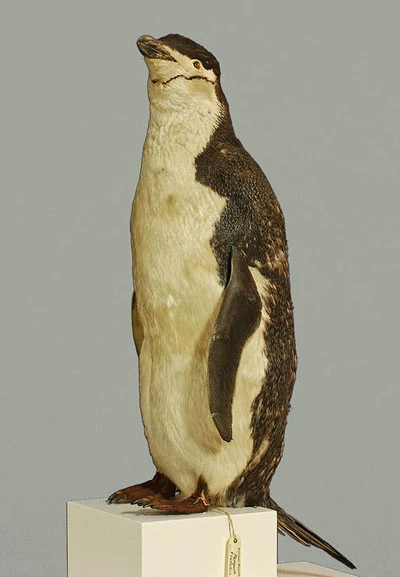
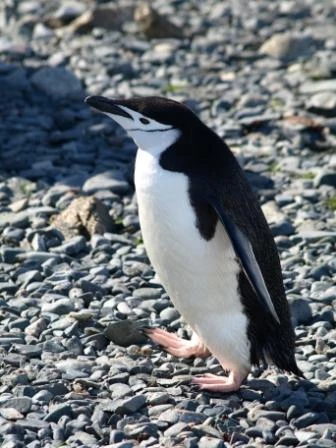
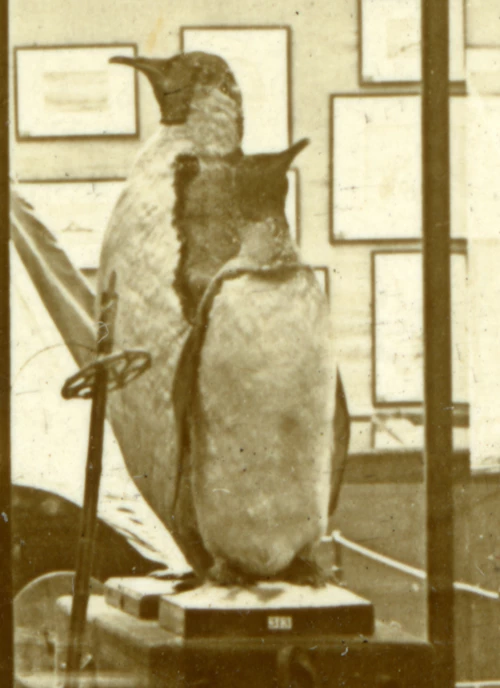

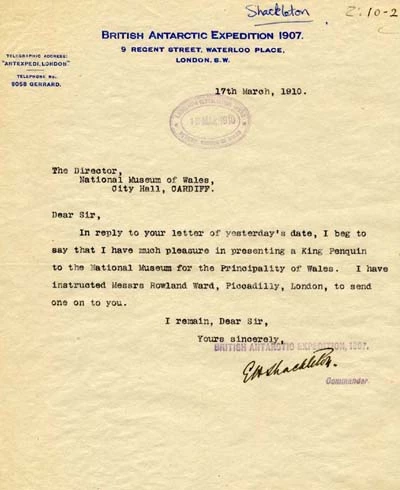
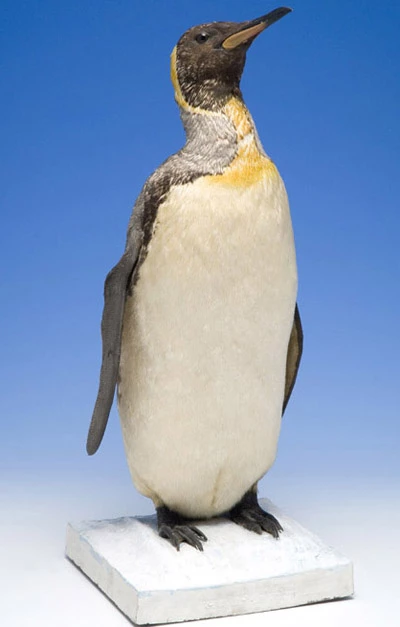

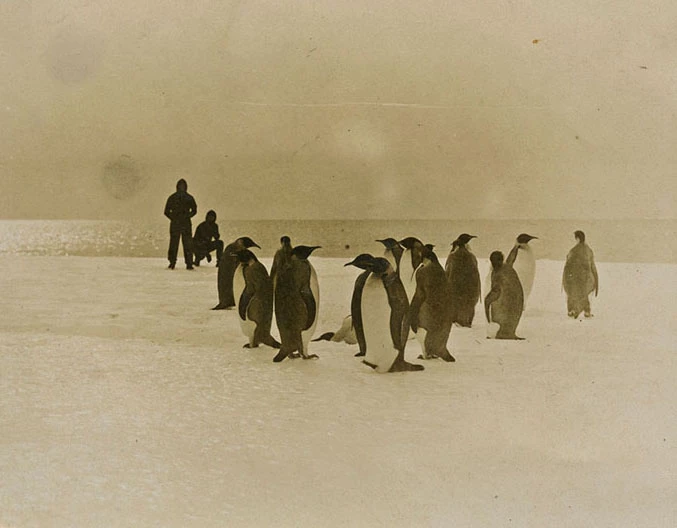
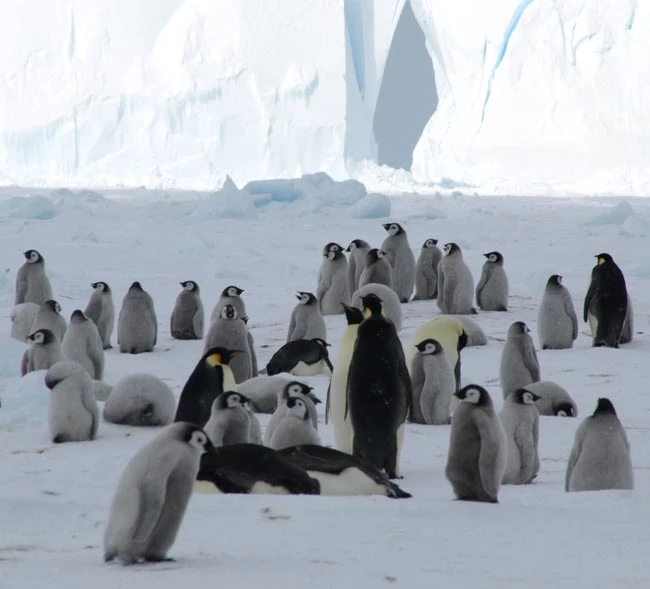
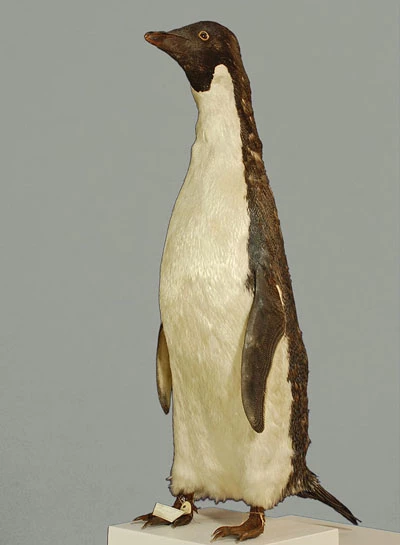
Comments - (1)